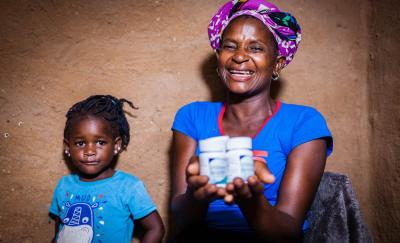In the 69 poorest countries in the world, an estimated 314 million women use modern contraception. While much attention and many resources focus on galvanizing voluntary contraceptive demand, counting additional users, and improving availability of certain methods, researchers and policymakers have devoted less attention to understanding where women obtain their contraceptives and how source patterns differ by contraceptive method and women's sociodemographic characteristics.
Efforts to reach family planning goals often focus on government resources and the public sector, ignoring the important role that the private sector can and does play in providing contraception. Examining where women obtain their contraception is key to informing collaboration across sectors. And harnessing the potential of all market actors—government, nongovernmental, and private commercial—is necessary to accelerate progress toward countries' family planning goals: expanding contraceptive access and choice and meeting women's contraceptive needs equitably.
Across all countries analyzed, we found that 34% of users rely on private sources, 63% use public sources, and 3% use other sources. Among private sector users, 41% use pharmacies or drug shops, 11% use general shops or markets, 36% go to private hospitals and clinics, and 12% rely on nongovernmental or faith-based organizations.
Our analysis shows a clear pattern between source and modern contraceptive method. Although the private sector is primarily a source for short-acting resupply methods (e.g., condoms and contraceptive pills), our analysis demonstrates that some injectable, implant, and intrauterine device users also rely on private sources for these methods.
We used recent demographic and health survey data from 36 low- and middle-income countries and disaggregated results by contraceptive method, age, marital status, residence, socioeconomic status, and country income. We compared women in the wealthiest population quintile with women in the poorest quintile, adolescents with women ages 40–49, never married women with ever-married women, and urban women with rural women..
The private sector is disproportionately used by unmarried women, adolescents, urban women, and wealthier women. However, on average across countries, the private sector also serves one in every four of the poorest contraceptive users and more than one of every four rural users.
Use also is higher in countries with lower modern contraceptive prevalence rates (mCPRs) and per capita gross national income, perhaps because the private sector fills gaps the government lacks the resources to handle. Use also is high in countries with higher mCPRs and incomes as wealthy users take advantage of mature private contraceptive markets.
Use of the private sector varied significantly by region and country. In Asian countries, 41 percent of users obtain their method from private sector sources. In West and Central Africa, the figure is 31 percent, while in East and Southern Africa, it’s 26 percent. But more than half of women using modern contraception go to private sector sources in Indonesia, Democratic Republic of Congo, Pakistan, Cambodia, and Afghanistan, while more than 80% use public sources in Zambia, Burundi, Ethiopia, Senegal, Tajikistan, Timor-Leste, and Rwanda.
Private sector sources vary widely, too. More than 75 percent of private sector users in Tajikistan, Ghana, Bangladesh, and Nigeria obtain their contraception from pharmacies or drug shops, while private clinics and hospitals serve the majority of private sector users in Uganda, Ethiopia, Indonesia, India, and Kenya.
In every country, the private sector is an important contraception source for certain population segments. Its share has remained relatively stable even as the public sector has offered injectables and implants, the biggest growth areas for contraceptives. On average, 22 percent of the poorest contraceptive users, and 27 percent of rural users still use private sources. Relying on both the public and private sectors is key and understanding country and subnational dynamics is critical for meeting the reproductive needs of women in all sociodemographic groups in low- and middle-income countries.




